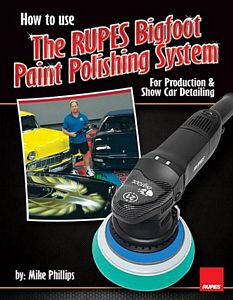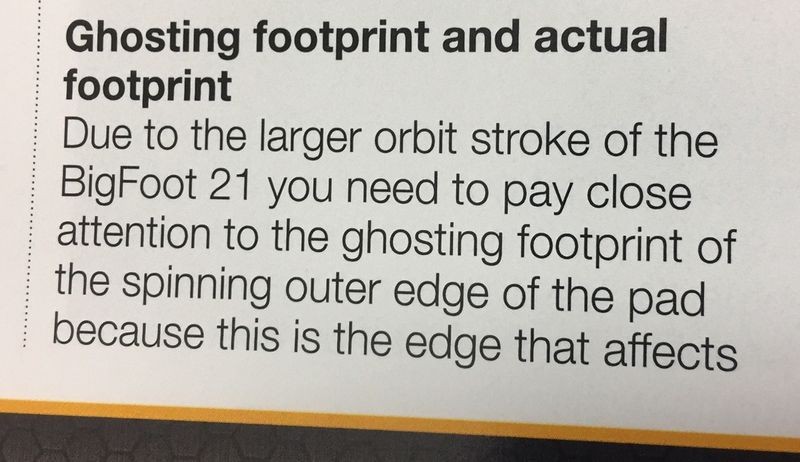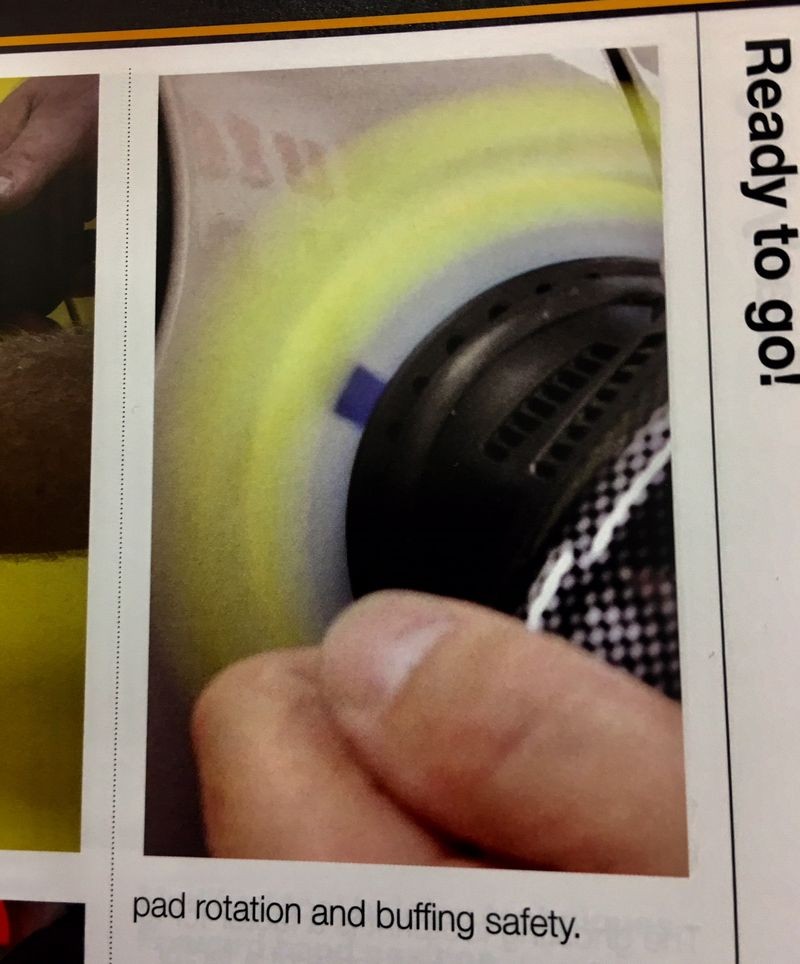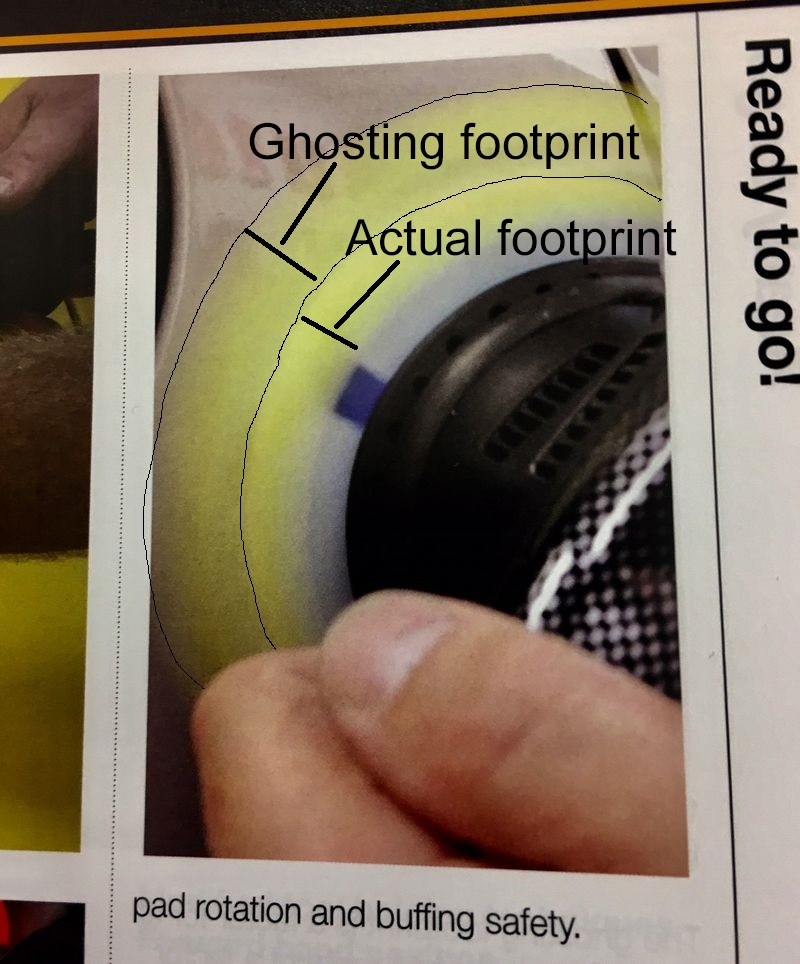The ghosting footprint and the actual footprint - Long Stroke Free Spinning Orbital Polishers
In my RUPES how-to book
On page 55, I created a term called,
The ghosting footprint and the actual footprint
Here's page 54 and 55
Down just to the right of my thumb is this section...
When you look down at any orbital polisher - if you look carefully you'll see two perimeters rings... the outer perimeter ring is the ghosting footprint as there is not 100% pad contact 100% of the time.
The inner perimeter ring is the actual footprint and there is 100% of pad contact 100% of the time.
I'm not very good in PS so here's the best I could do using the images already in the book.
With short stroke free spinning orbital polishers and with gear-driven short stroke orbital polishers, the ghosting footprint is so small it's a non-issue. And pad stalling with short stroke polishers is a lot less of an issue than long stroke polishers.
That is, the is less of a chance that the panel you're buffing can cause pad stall as the pad (with free spinning short stroke tools), because the outer edge of the pad will have less leverage over the reciprocating components due to the smaller orbit stroke length than you get with long stroke free spinning tools.
Another way of saying this is,
When buffing with a free spinning random orbital polisher, when buffing curved panels - the OUTER EDGE of the buffing pad will have LEVERAGE over the reciprocating components and this leverage will overcome the inertia created by the counterweight and cause the pad to stall or even stop.
The shorter the stroke - the less potential leverage thus the less potential for pad stalling.
The longer the stroke - the more potential leverage thus the more potential for pad stalling.
This is a non-issue with a gear-driven tool like gear-driven orbitals and rotary polishers.


|











 Thanks:
Thanks:  Likes:
Likes:  Dislikes:
Dislikes: 







 Reply With Quote
Reply With Quote
Bookmarks